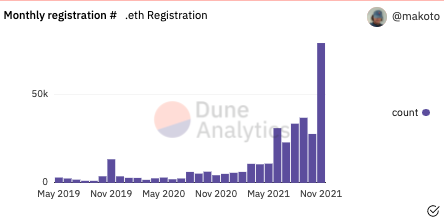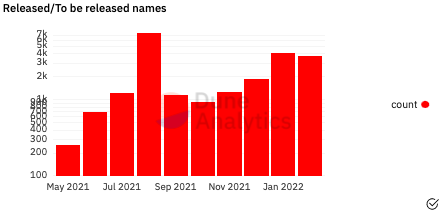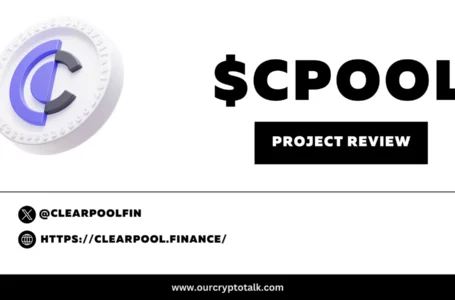
The crypto-verse has seen the launch of several new projects over the past few years. While a few have successfully managed to stay afloat, adapting to the changing dynamics and maintaining their relevance, the rest have merely perished with time.
The skepticism associated with new technological trends is not new. For example, NFTs were seen as fake works of art during their early days. However, as they started to gain traction, the aforementioned narrative started to become redundant.
Novel, non-mainstream projects, more often than not, take their own time to create a niche and establish themselves. Then, it just becomes a matter of time for their name and fame to heighten.
Well, Ethereum Name Service is one of those projects. ENS is a decentralized, open source internet naming protocol that runs on the Ethereum blockchain.
After being proposed in 2016 and launching in 2017, this project managed to resurface and surge in popularity a few weeks ago. The airdrop event for its novel ENS token almost single-handedly brought the project back to the limelight.
Obviously, there is a new hype of .eth domain names going around. For starters, once you open up Crypto-Twitter, you will almost certainly come across a bunch of usernames with .eth near the end. Now, these names aren’t just names.
Domain names, ending with .eth, are essentially users’ cross-platform web3 usernames. They more or less act like a bridge between crypto-wallets and the rest of the Internet.
A rediscovered fascination
Interest in ENS has increased day by day. In November alone, so far, over 79,000 domains have been freshly created on Ethereum Name Service, making November 2021 one of its biggest months.
In effect, the cumulative number of registrations has now crossed 481.5k.

The published / to be published names are also quite high at the moment, indicating that people are enthusiastically rushing to become e-owners.
Despite all the hype, it should be noted that a fair share of new entrants has steeped into ENS’s arena with the intention of cyber-squatting or registering well-known company/brand names as e-domains. Here, the ulterior motive to do so is to re-sell them at a profit at a later stage.
Now, the whole cyber-quatting phenomenon also took place in 1999 during the dot-com boom phase. However, when the squatters began to realize that they weren’t taking advantage of domain name blocking, they eventually left the arena. Since then, cyberspace has continued to grow organically.
Thus, ENS cyber-squatters too would eventually be flushed out of the picture.

Other serious things
Since ENS is a protocol running on the Ethereum blockchain, it is subject to its gas royalty. At the time of writing, the gasoline fee for a one-year domain registration was around 0.034 ETH.
Well, the average gas fee has been revolving at a much lower rate of late. At the time of writing, it was 120 gwei, or merely 0.00000012 ETH.

Now, as for the native ENS token, it works pretty well. Even amid the broader downtrend in the market, the token has appreciated over 65% over the past week. At the time of going to press, in fact, he has been seen trading hands around the $ 75 mark.
What’s more, its social volume and dominance have been spending more upside time, implying that people are still excited and vocal about what’s happening within ENS’s ecosystem.
The aforementioned trends and numbers make it clear that the “domain grab” hype is here to stay. In fact, if things go right, Ethereum Name Service could become the next big thing in the metaverse.


















